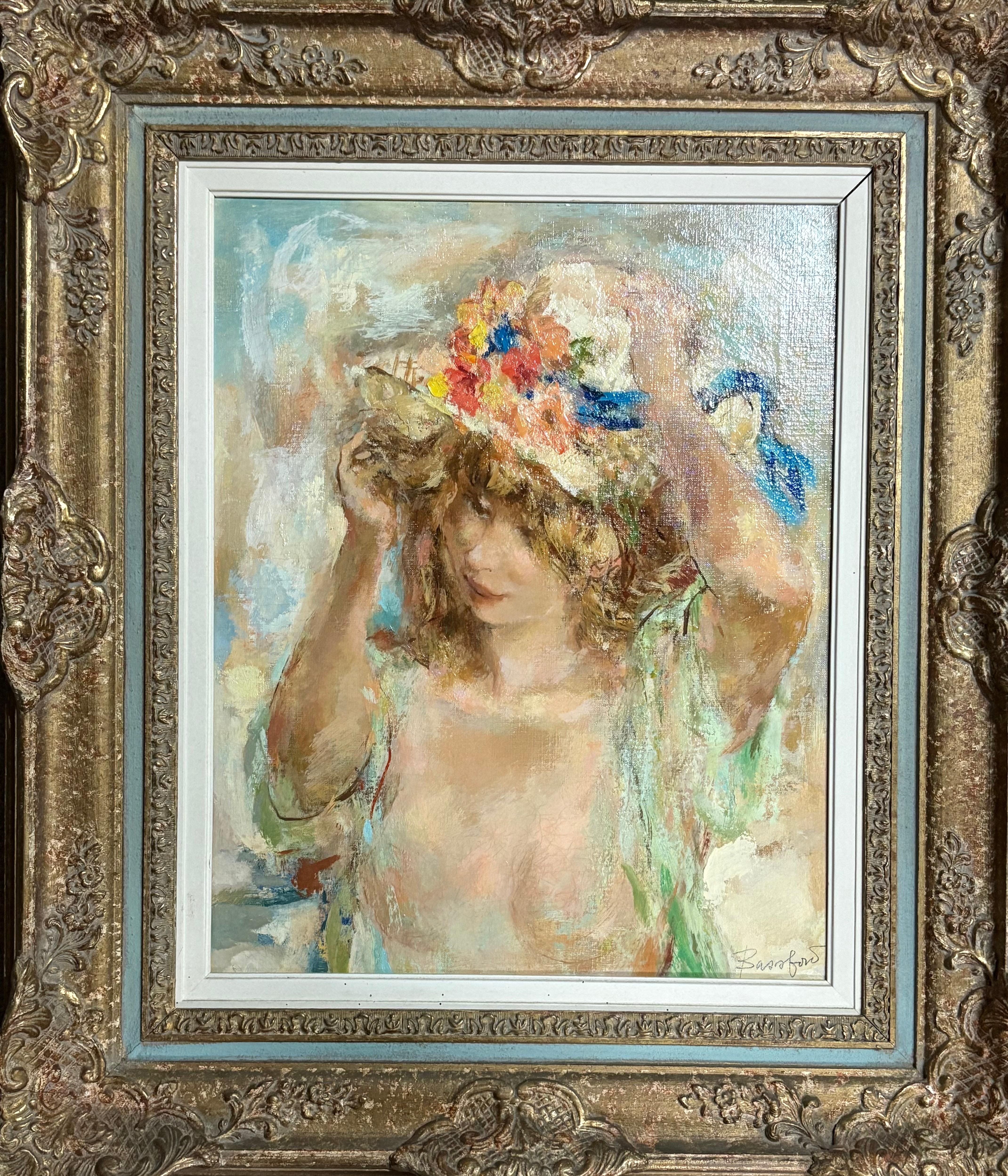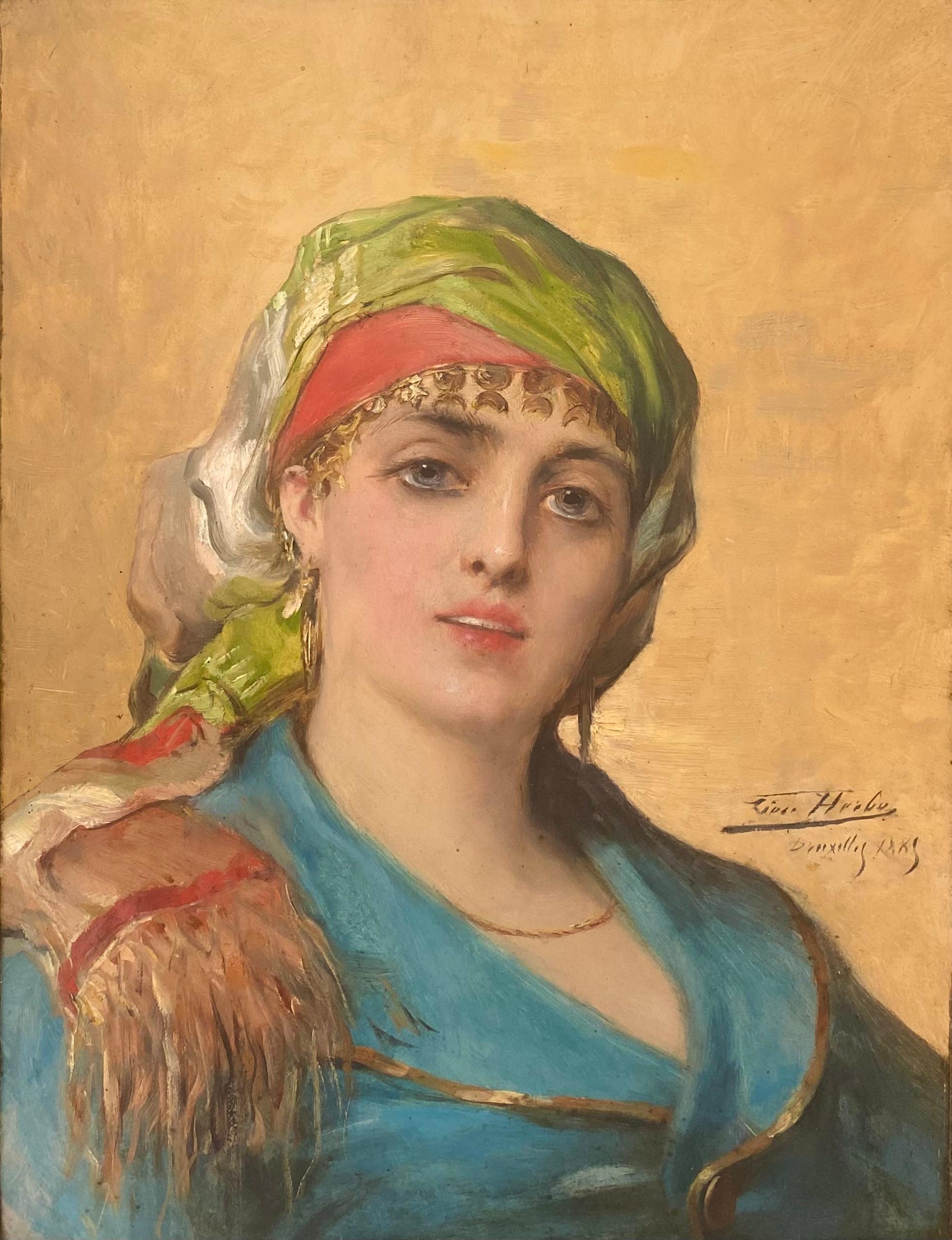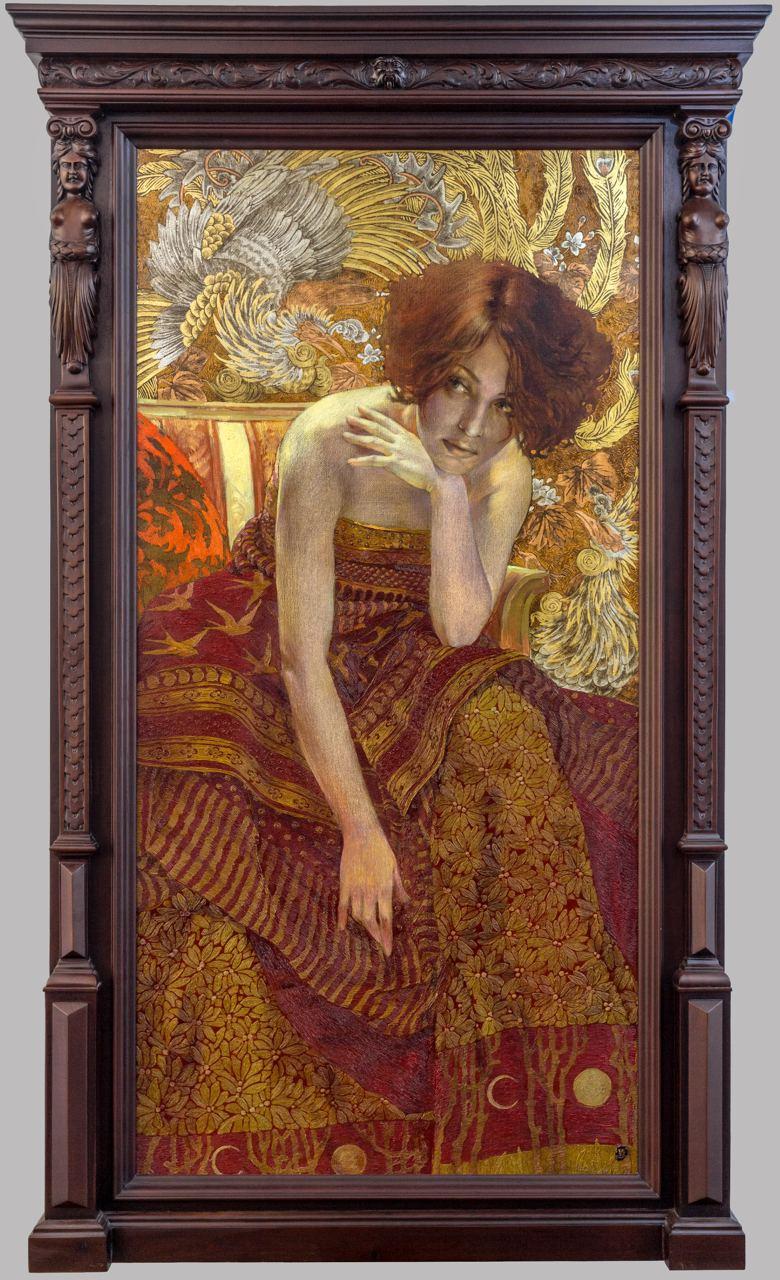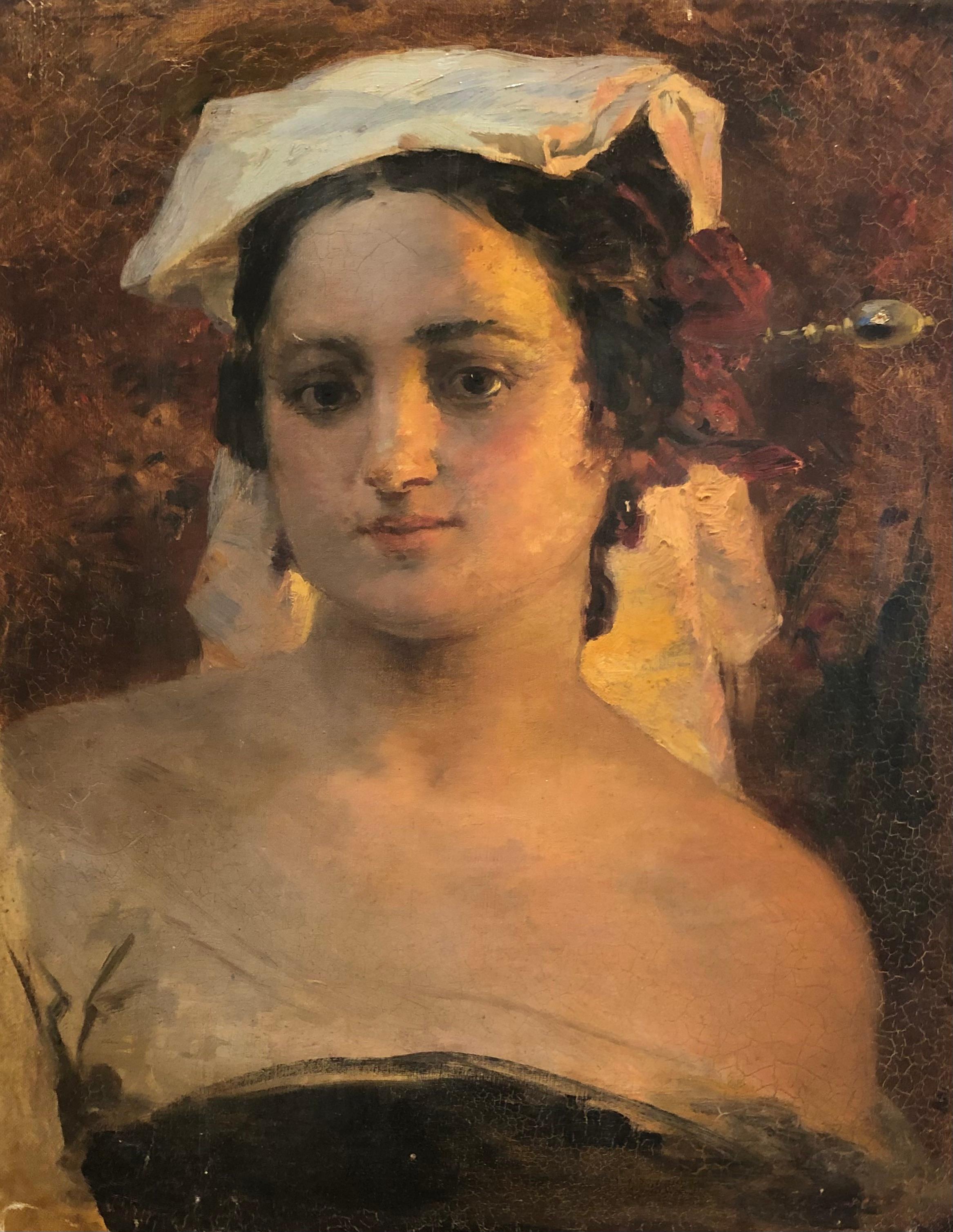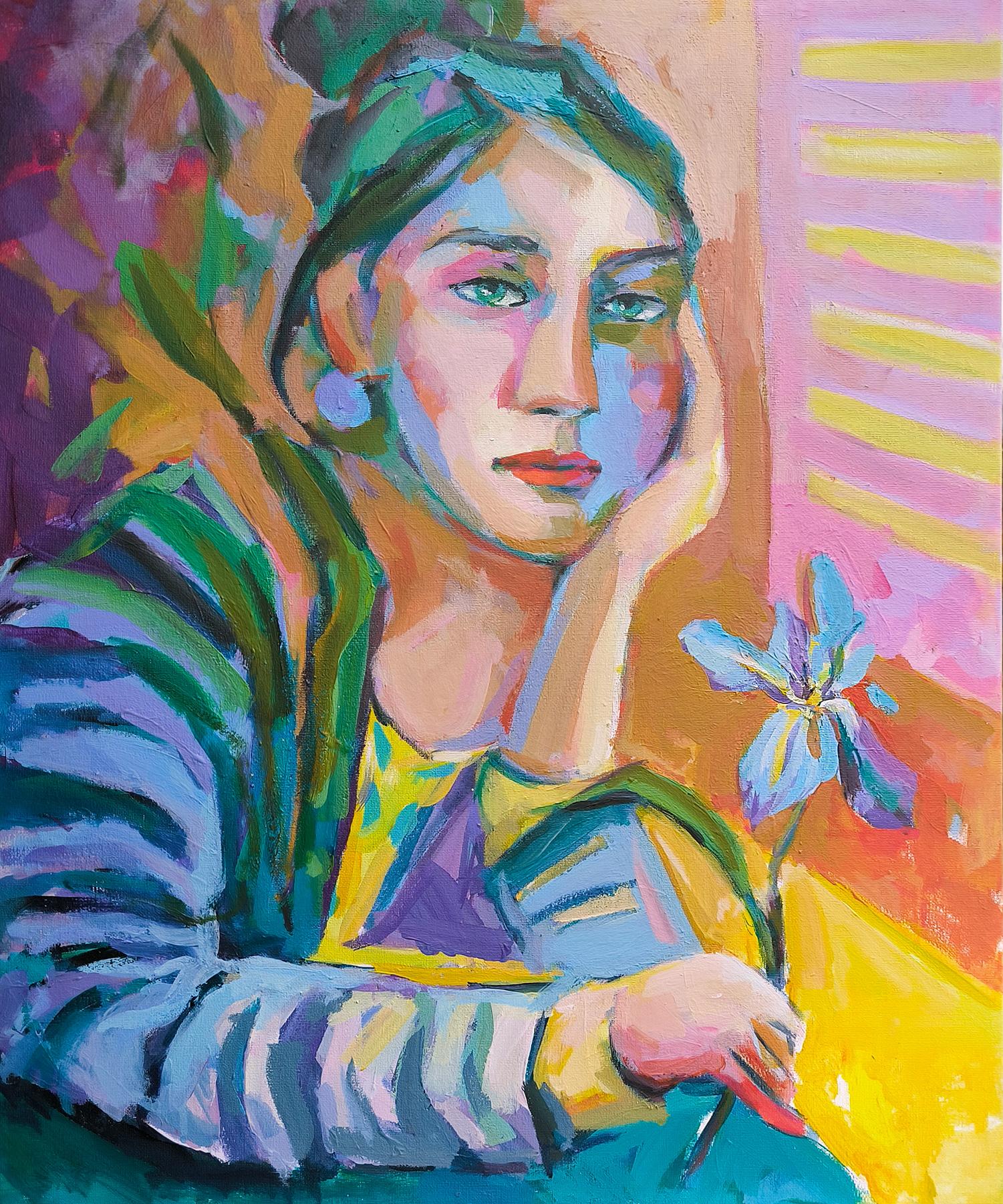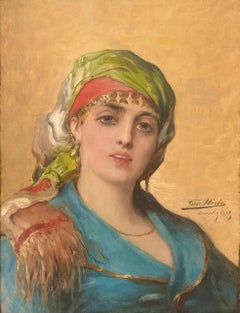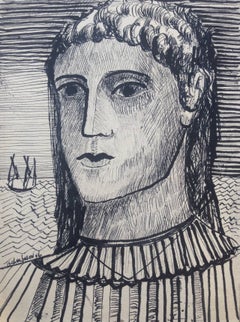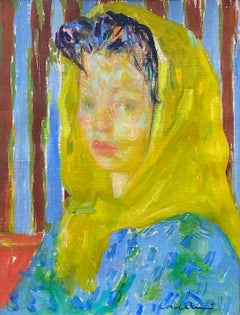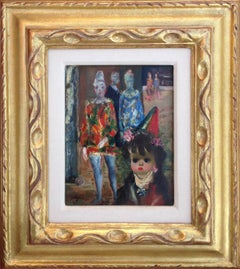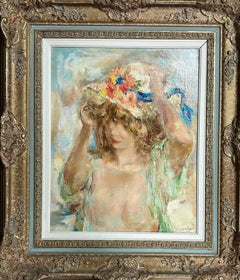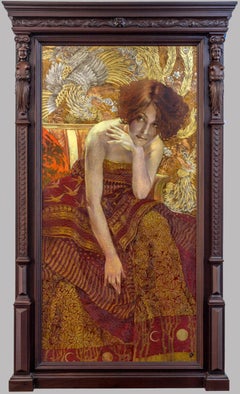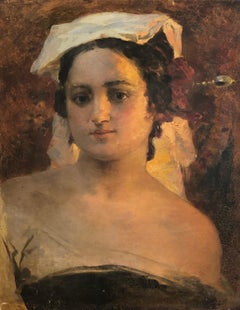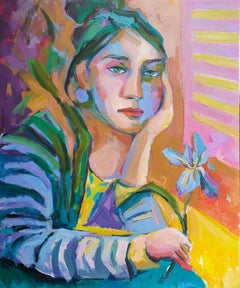Want more images or videos?
Request additional images or videos from the seller
1 of 12
Konrad Filip“The Harem Girl”Circa 1900
Circa 1900
$5,200
$8,50038% Off
£3,946.12
£6,450.3938% Off
€4,518.64
€7,386.2338% Off
CA$7,389.56
CA$12,079.0938% Off
A$8,042.64
A$13,146.6238% Off
CHF 4,222.31
CHF 6,901.8638% Off
MX$97,166.84
MX$158,830.4138% Off
NOK 52,994.70
NOK 86,625.9638% Off
SEK 49,967.74
SEK 81,678.0338% Off
DKK 33,731.22
DKK 55,137.5738% Off
About the Item
Here for your consideration is an intriguing portrait of a young harem girl in costume by the German artist, Konrad Filip. Signed by the artist top right, Munich. Condition is very good. Old reline of canvas. Circa 1900. The painting is housed in a period but not original frame composed of gold leaf over gesso over wood. Frame is in fine original condition. Overall measurements are 31 by 27 inches. Provenance: Newman Gallery. Newman Gallery located in Philadelphia, Pennsylvania was one of the predominant art establishments in its day.
Konrad Filip was born in Germany in 1874. He is known for his oriental portraits as well a floral paintings. He was a Munich School painter and died in 1939.
About the Seller
5.0
Platinum Seller
Premium sellers with a 4.7+ rating and 24-hour response times
Established in 1977
1stDibs seller since 2013
547 sales on 1stDibs
Typical response time: <1 hour
- ShippingRetrieving quote...Shipping from: Southampton, NY
- Return Policy
Authenticity Guarantee
In the unlikely event there’s an issue with an item’s authenticity, contact us within 1 year for a full refund. DetailsMoney-Back Guarantee
If your item is not as described, is damaged in transit, or does not arrive, contact us within 7 days for a full refund. Details24-Hour Cancellation
You have a 24-hour grace period in which to reconsider your purchase, with no questions asked.Vetted Professional Sellers
Our world-class sellers must adhere to strict standards for service and quality, maintaining the integrity of our listings.Price-Match Guarantee
If you find that a seller listed the same item for a lower price elsewhere, we’ll match it.Trusted Global Delivery
Our best-in-class carrier network provides specialized shipping options worldwide, including custom delivery.More From This Seller
View All“Gypsy Girl”
By Leon Herbo
Located in Southampton, NY
Original oil on mahogany wooden panel of a young gypsy woman in a colorful headdress and costume. Signed middle right and dated 1885, Brussels. Original inscription paper label vers...
Category
1880s Academic Figurative Paintings
Materials
Oil, Board
$5,200 Sale Price
20% Off
“Untitled”
By Nahum Tschacbasov
Located in Southampton, NY
Unframed
Signed and dated lower left 1946
Category
1940s Modern Figurative Paintings
Materials
Paper, Ink
$396 Sale Price
20% Off
“The Proud Girl”
By Edgardo Corbelli
Located in Southampton, NY
Oil on canvas painting of a young girl with a yellow scarf by the well known Italian artist, Edgardo Corbelli. Signed lower right. Titled on canvas verso, “The Proud Girl”. Circa ...
Category
1960s Post-Modern Figurative Paintings
Materials
Canvas, Oil
$2,400 Sale Price
29% Off
"Untitled"
By Jean Calogero
Located in Southampton, NY
Oil on canvas painting by the Italian artist, Jean Calogero. Circa 1950. Signed lower left
Overall in museum quality gold leaf frame 17.5 by 15.75 inches. Condition: Good. Provenan...
Category
1950s Modern Figurative Paintings
Materials
Canvas, Oil
$1,200 Sale Price
25% Off
“Untitled”
By Nahum Tschacbasov
Located in Southampton, NY
Original oil on canvas painting by the well known Russian/American artist, Nahum Tschacbasov.. Signed top left by the artist and dated 1975. Condition is very good. Presently unfr...
Category
1970s Post-Modern Figurative Paintings
Materials
Canvas, Oil
“Untitled”
By Martin Rosenthal
Located in Southampton, NY
Original oil on canvas provocative figurative painting by the American artist Martin Rosenthal. Mid century modern. Signed lower right. Circa 1955. Condition is very good. Present...
Category
1950s Modern Figurative Paintings
Materials
Canvas, Oil
$2,240 Sale Price
20% Off
You May Also Like
“Girl”
By Wallace Bassford
Located in Warren, NJ
Wallace Bassford original oil painting on canvas. In good condition measures 29x26
Category
20th Century Paintings
Materials
Oil
$2,500
Martisha
Located in Edinburgh, GB
Materials: Oil on canvas, gold, copper and silver leaf, oil pastel
The image of a woman sitting in front of the mirror thinking
Category
2010s Figurative Paintings
Materials
Gold
Young woman
Located in Genève, GE
Work on canvas
Category
19th Century Portrait Paintings
Materials
Oil
$2,358
Portrait of a Girl “Iiris”
Located in Zofingen, AG
The painting embodies a deep connection between humanity and nature. The woman seems to personify the iris, highlighting that humans are part of nature and that the beauty of the nat...
Category
2010s Modern Portrait Paintings
Materials
Canvas, Oil
Princess Figurative Painting
Located in Douglas Manor, NY
5-3424 Figural painting
Mixed media on artist board
Image size 12x10"
Displayed in a black wood frame
Signed Vanzina
Category
1960s Figurative Paintings
Materials
Acrylic
$375 Sale Price
31% Off
Untitled
Located in San Francisco, CA
Artist: Piotr Krosny – Polish (1959- )
Title: Untitled
Year: circa 1999
Medium: Oil on Linen
Size: 43.5 x 36.5 inches (111 x 93 cm)
Framed size: 44.5 x 37.5 inches (113 x 95 cm)
Sign...
Category
1990s Contemporary Figurative Paintings
Materials
Linen, Oil
